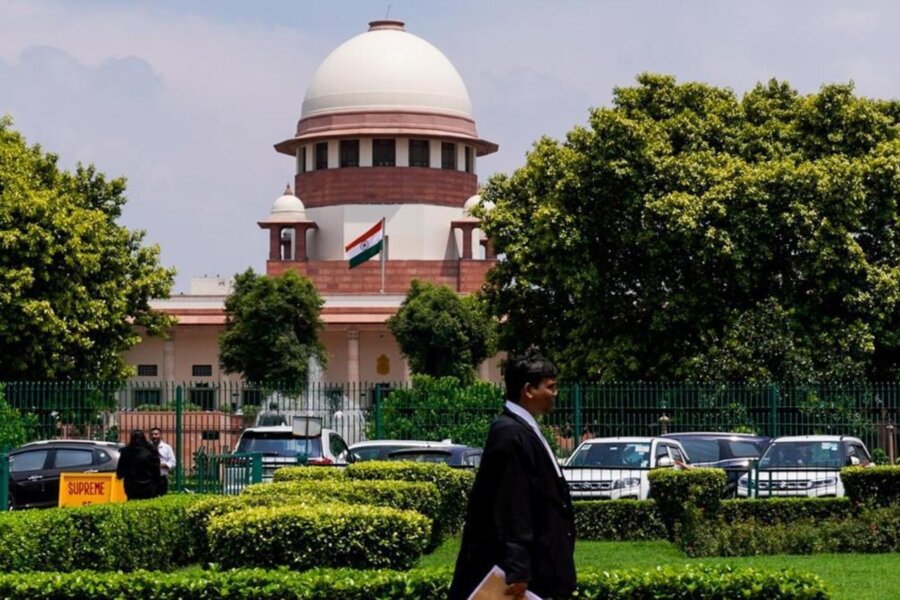Best Toxic Tort Lawyers in Napier City
Share your needs with us, get contacted by law firms.
Free. Takes 2 min.
List of the best lawyers in Napier City, New Zealand
We haven't listed any Toxic Tort lawyers in Napier City, New Zealand yet...
But you can share your requirements with us, and we will help you find the right lawyer for your needs in Napier City.
Find a Lawyer in Napier CityAbout Toxic Tort Law in Napier City, New Zealand
Toxic torts are legal claims that arise when people, property, businesses or communities are harmed by exposure to hazardous substances. In Napier City and the wider Hawke's Bay region these claims can involve industrial chemicals, agricultural agrichemicals, asbestos, lead, contaminated land, polluted groundwater and legacy fuel or waste sites. Toxic tort law sits at the intersection of environmental regulation, health and safety law and civil liability rules.
In New Zealand the legal landscape for toxic torts is shaped by national statutes and regional regulators. Some harm from exposure is dealt with by public agencies and statutory compensation schemes, while other harms can lead to civil claims for property damage, economic loss, nuisance, trespass or - in limited circumstances - exemplary damages. Because toxic exposure can affect health, property and the environment, claims often require scientific evidence, specialist legal knowledge and engagement with local authorities and regulators.
Why You May Need a Lawyer
People facing possible toxic tort issues in Napier may need a lawyer for several reasons:
- To understand whether a legal claim is possible given New Zealand law and the Accident Compensation scheme, which affects personal injury claims.
- To identify the right legal cause of action - for example negligence, nuisance, trespass, breach of statutory duty or claims for property and economic loss.
- To preserve and manage technical evidence such as environmental testing, chain of custody for samples, medical records and expert reports.
- To deal with regulators and authorities - for example Hawke's Bay Regional Council, Napier City Council, WorkSafe New Zealand or the Environmental Protection Authority - and to ensure statutory reporting requirements are met.
- To pursue group or representative proceedings if many people are affected, including preparing and filing Group Proceedings under the Group Proceedings Act 2008.
- To negotiate with responsible parties, insurers and remediation contractors, or to seek injunctive relief to stop ongoing exposures or contamination.
Local Laws Overview
Several New Zealand statutes and local regulatory processes are particularly relevant to toxic torts in Napier:
- Resource Management Act 1991 - governs land use, discharges to land, air and water, and gives regional councils powers to regulate activities that affect the environment. Hawke's Bay Regional Council enforces regional plans and resource consents relevant to contamination and discharges.
- Health and Safety at Work Act 2015 - applies to workplace exposures. Employers and PCBUs have duties to manage hazardous substances and protect workers and others who may be affected by workplace activities. WorkSafe New Zealand is the main workplace health and safety regulator.
- Hazardous Substances and New Organisms Act 1996 - regulates the importation, manufacture, use and disposal of hazardous substances. The Environmental Protection Authority administers aspects of this law.
- Accident Compensation scheme - New Zealand has a no-fault compensation system for personal injury. This generally prevents private civil claims for personal injury caused by accidents. Injured people normally claim through ACC for treatment and compensation. Civil claims for exemplary damages or for non-physical losses, property damage and economic loss may still be possible.
- Limitation Act 2010 - sets time limits for bringing civil proceedings. For most tort and contract claims the limitation period is six years from when the cause of action arose or from when the claimant discovered the damage - the discoverability principle can be important in latent exposure cases.
- Local laws and bylaws - Napier City Council and other local bodies may have specific rules, consent regimes and contamination registers that affect site clean-up and liability.
Disputes under the Resource Management Act may be taken to the Environment Court. Civil claims for property damage, economic loss, nuisance or exemplary damages are handled in the District Court or High Court depending on the value and nature of the claim.
Frequently Asked Questions
Can I sue if I or a family member became ill after exposure to chemicals in Napier?
New Zealand's Accident Compensation scheme provides no-fault compensation for personal injury, and in most cases it prevents private lawsuits in tort for personal injury. If you have a physical injury from exposure, you should first seek medical attention and consider an ACC claim. In some situations you may also have civil remedies for non-physical loss, property damage, economic loss or the rare claim for exemplary damages. A specialist lawyer can explain what claims remain available.
What types of legal claims are possible in toxic exposure cases?
Common civil claims include negligence, nuisance, trespass to land, breach of statutory duty, and claims for property damage or economic loss. Representative or group proceedings can be used where many people are affected. Criminal or regulatory enforcement actions can be pursued by regulators for breaches of environmental or health and safety laws.
Who enforces environmental and hazardous-substance rules in Napier?
Hawke's Bay Regional Council enforces regional environmental rules and resource consents. Napier City Council administers local land-use and building controls. The Environmental Protection Authority handles some hazardous-substances issues. WorkSafe New Zealand enforces workplace health and safety. Public health and Te Whatu Ora have roles for health responses. Which agency is relevant depends on the substance, location and nature of the harm.
How should I preserve evidence of contamination or exposure?
Document everything - photos, videos, dates and times, witness names and contact details, and keep any physical evidence safely. Seek professional environmental testing from accredited labs for soil, water or air samples and keep chain of custody records. Obtain medical records from your GP and any specialists. Early preservation of evidence is critical to any legal or regulatory action.
What if my property is contaminated - who pays for clean-up and remediation?
Liability for clean-up depends on who caused the contamination, statutory obligations under the RMA and HSNO, and contractual or insurance arrangements. Responsible parties may be directed by regional councils to undertake remediation. Civil claims for remediation costs or diminution in property value can be possible, subject to limitation periods and proof of causation.
Can a group of residents bring a single case if many people are affected?
Yes. New Zealand's Group Proceedings Act 2008 allows representative proceedings where many people have similar claims. Group proceedings can be an effective way to share the cost of expert evidence and to manage many related claims against the same defendant or defendants. A lawyer experienced in group proceedings can advise whether this route is appropriate.
How long do I have to bring a legal claim?
Time limits vary by claim type. For most civil claims the Limitation Act 2010 imposes a six-year limitation period from the date the cause of action accrued. For latent injuries or contamination, the discoverability principle may affect the start of that period. Regulatory enforcement has its own timeframes. Because delays can affect evidence and legal rights, you should seek advice promptly.
What kinds of experts will be needed in a toxic tort case?
Toxic tort cases often need multidisciplinary experts - environmental scientists, industrial hygienists, toxicologists, medical specialists, engineers and valuation experts for property loss. Lawyers coordinate expert evidence to address causation, exposure pathways, levels of contamination and likely health or property impacts.
Can I get interim orders to stop ongoing exposure?
Yes. Courts can grant interim relief such as injunctions to stop activities that cause ongoing contamination or to require interim remediation steps. Regulators can also issue notices requiring immediate action. Seeking urgent legal and regulatory advice is important when exposures continue.
How much will a toxic tort lawyer cost and are there funding options?
Costs depend on complexity, the need for expert evidence and whether the matter proceeds to court. Some lawyers offer initial consultations for a fixed fee or free. Funding options include conditional-fee agreements, retainer arrangements and, in some limited civil matters, legal aid or third-party funding. Ask a prospective lawyer about fee structures, estimates of likely disbursements and whether alternative dispute resolution could reduce costs.
Additional Resources
Useful local and national bodies and resources for toxic tort matters in Napier include the following organizations and regulators - Napier City Council, Hawke's Bay Regional Council, Environmental Protection Authority, WorkSafe New Zealand, Te Whatu Ora - Health New Zealand Hawke's Bay, Ministry for the Environment, New Zealand Ministry of Health. For legal help consider contacting the New Zealand Law Society for lawyer referrals and local community law centres in the Hawke's Bay region for initial advice. The Environment Court and the general courts provide dispute resolution pathways for environmental and civil claims.
Next Steps
If you believe you have been harmed by toxic exposure in Napier, consider the following practical steps:
- Seek immediate medical attention and ensure your GP records the exposure and symptoms. If the exposure is recent, contact ACC where appropriate.
- Preserve evidence - take photographs, keep samples where safe to do so, record dates and times and collect witness details.
- Notify relevant authorities - for workplace exposures contact WorkSafe, for environmental discharges contact Hawke's Bay Regional Council and for local land-use issues contact Napier City Council. They can advise on reporting requirements and may investigate.
- Arrange independent environmental testing from accredited laboratories if contamination of property or water is suspected. Keep chain of custody and lab reports.
- Contact a lawyer who specialises in environmental law, toxic torts or public liability. Prepare a summary of events, copies of medical and testing records and any correspondence with authorities to help the lawyer assess your situation.
- Discuss options with your lawyer - regulatory complaints, negotiation, remediation arrangements, representative proceedings, or court action - and ask about time limits, likely costs and funding arrangements.
Remember that this guide is for general information only and does not replace personalised legal advice. If you are facing a potential toxic tort issue, professional legal and scientific advice tailored to your circumstances is essential.
Lawzana helps you find the best lawyers and law firms in Napier City through a curated and pre-screened list of qualified legal professionals. Our platform offers rankings and detailed profiles of attorneys and law firms, allowing you to compare based on practice areas, including Toxic Tort, experience, and client feedback.
Each profile includes a description of the firm's areas of practice, client reviews, team members and partners, year of establishment, spoken languages, office locations, contact information, social media presence, and any published articles or resources. Most firms on our platform speak English and are experienced in both local and international legal matters.
Get a quote from top-rated law firms in Napier City, New Zealand — quickly, securely, and without unnecessary hassle.
Disclaimer:
The information provided on this page is for general informational purposes only and does not constitute legal advice. While we strive to ensure the accuracy and relevance of the content, legal information may change over time, and interpretations of the law can vary. You should always consult with a qualified legal professional for advice specific to your situation.
We disclaim all liability for actions taken or not taken based on the content of this page. If you believe any information is incorrect or outdated, please contact us, and we will review and update it where appropriate.







